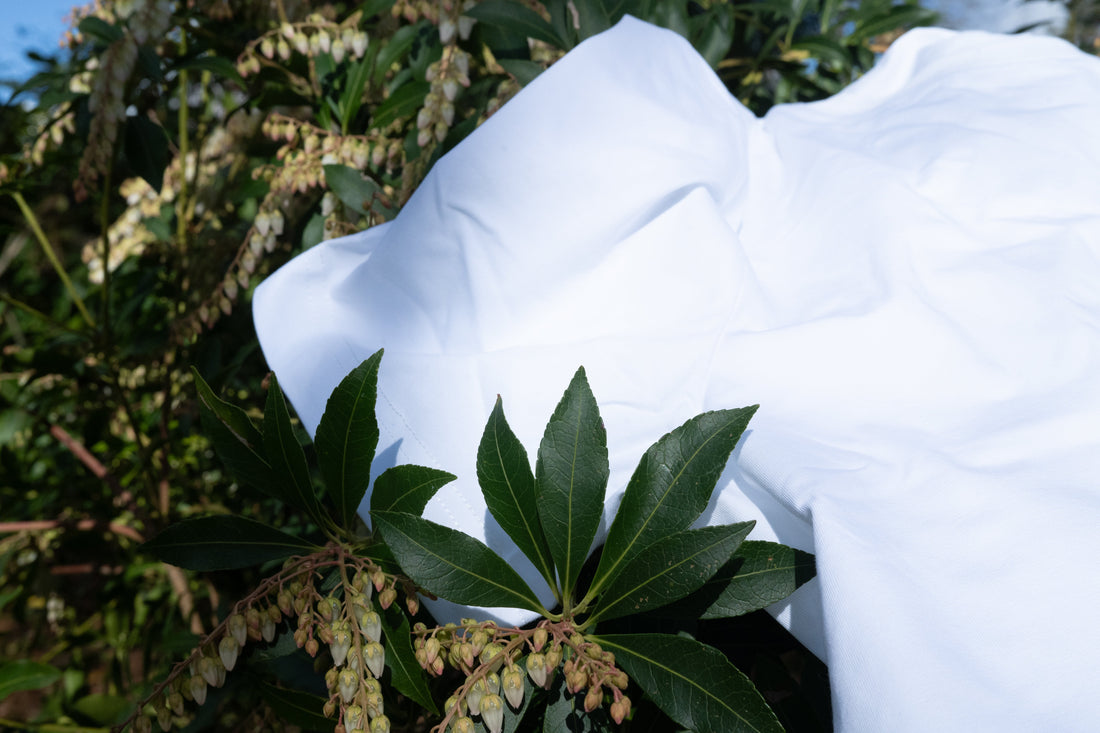
How to Start a Clothing Brand — By Starting with What You Already Have
Launching a clothing brand doesn’t require a fashion degree or massive investment. Whether you’re passionate about fabric, sourcing, art, or culture, the best place to begin is: start with what you already have.
This guide walks you through a resource-based approach to building your own brand—sustainably, creatively, and profitably.
1. Start with What You Have
Before you think about designs or trends, take inventory of your own strengths and resources.
Do you live near a fabric market or factory district?
Are you a designer, artist, or someone with an eye for detail?
Do you already have a small online following or niche audience?
👉 If you have easy access to materials, you can develop multiple product styles quickly.
👉 If you're more interested in fabric quality, start with a textile-driven concept.
👉 If you have a visual background, try printing original or licensed artwork on blank tees.
Tip: Our Natural Wand Collection started from a simple idea—bringing calming rituals into everyday life through clean, natural materials. Yours can, too.
2. Start Simple if Resources Are Limited
You don’t need a warehouse or a full cut-and-sew team. If you’re just starting out, try creating value through visual storytelling and small-batch products.
One powerful and low-cost strategy is printing compelling artwork on quality blank T-shirts. These can be your own art, photography, or licensed cultural references. You can start with local screen printers or use POD (Print-on-Demand) platforms to validate the idea without holding inventory.
Simplicity is powerful when it’s done with intention.
3. Build Around Your Strengths
Instead of copying what’s trendy, double down on what you’re already good at:
If you’re resourceful with sourcing: offer a range of fabric types or silhouettes.
If you’re detail-oriented: perfect one piece (like a T-shirt) with exceptional fit and finish.
If you’re visually creative: turn every piece into a canvas for storytelling.
Remember: Product depth or product concept—pick one to lead with.
4. Define Your Brand Story and Identity
Consumers connect to brands that know what they stand for. Ask yourself:
What are my values as a brand?
Who is this brand for, and what does it solve or inspire?
How should people feel when they wear it?
Once you’re clear, reflect that story across your:
Brand name & logo
Product photography
Website design and packaging
Social media voice
🔗 Looking for visual brand inspiration? Browse our Natural Wand Collection, where every product speaks to simplicity, ritual, and comfort.
5. Know Your Numbers: Pricing & Inventory Strategy
Pricing is strategy. It’s not just a markup—it’s your survival plan.
Break down your costs clearly:
Materials (fabrics, labels, trims)
Labor (sampling, production)
Logistics (shipping, packaging)
Marketing (photo, influencer seeding, ads)
From there, set your retail price with a sustainable margin—and don’t forget to leave room for future discounts or wholesale partnerships.
But here’s the real killer: inventory.
Monitor your stock levels closely.
Keep batches small and test demand before scaling.
Inventory equals cash—don’t let it get stuck in unsold products.
Many small clothing brands fail because of dead stock, not bad design.
6. Build Your Online Store and Launch Strategically
Set up a clean, easy-to-navigate Shopify store with:
A homepage that reflects your mission
A “Shop” section with clear product categories
An “About” page that tells your story
FAQ, sizing guide, return policy
💡 Don’t forget to connect Instagram, TikTok, or Pinterest for organic reach.
📸 Plan a lightweight but professional photo shoot with lifestyle and product shots.
CTA: Already have products ready to go? Explore eco-conscious incense and rituals to enrich your store's mood.
7. Test. Learn. Improve.
After launching, treat everything as a learning opportunity.
What are customers saying about the fit, quality, and vibe?
Which products are moving faster?
Is your pricing aligned with perceived value?
Start small, watch the signals, and keep refining.
Pro tip: Your first 100 customers are your most valuable feedback loop. Listen to them like gold.
Final Thoughts
There is no single path to building a brand. But every strong brand shares this formula:
Start with what you have
-Align your product with your strengths
-Price and manage inventory strategically
-Tell a clear story through everything
-Improve by testing, not guessing
You don’t need permission to begin—you just need a place to start.
So take what’s in your hands, and begin crafting not just clothing, but something people feel part of.
